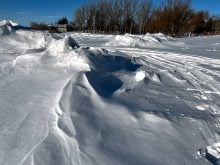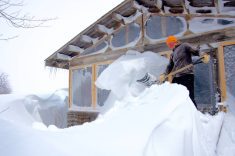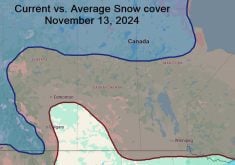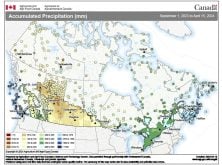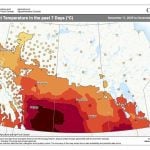The weather page is prepared by Daniel Bezte. Dan has a BA Honours degree in geography, specializing in climatology, from the U of W. He has taught climate and weather classes at the U of W, and is a guest climate expert on CJOB’s morning show with Larry Updike. Daniel runs a computerized weather station on his 10 acres near Birds Hill Park, which he plans to develop into a small vegetable and fruit hobby farm.
Daniel welcomes questions and comments at [email protected]
Read Also

Farmer gift idea: How about a weather station?
The 2025 holiday season is looming, and a home weather station might make a great Christmas gift for farmers
In the last article we started our discussion about the Arctic, and Arctic sea ice. After rereading that article I discovered I had made a mistake in calculating the area of land. I came up with a number of about 5.7 million square kilometres, but I forgot to add in one very large ice-covered land mass: Greenland, which has an area of about 2.1 million square km, would push up our total land area to around 7.8 million square km. Add in the Arctic Ocean and our total area is now around 22 million square km.
Now, at the end of the last article, we looked at how the temperature difference between the poles and the equator is what fundamentally drives the Earth’s weather systems. Keep these two areas fairly constant and our weather will remain fairly constant. Change the energy balance of one of these regions and there are going to be weather consequences, let me tell you! (Gee, I feel like a parent here.)
If we look at the equatorial regions, not a lot can happen to change how much energy is received and given back. Sure, the amount of energy coming in from the sun can vary by a small amount, as the sun cycles through active and inactive periods, but we really can’t change large portions of the surface of the Earth to affect how much energy is absorbed and released.
COVERING
The Arctic is altogether different, due to the fact it is covered in snow and ice for a large portion of the year. Snow and ice are not permanent – that is, they are simply a covering which, under the right conditions, will either remain in place or melt away.
We all know how snow and ice can affect the weather; we see their effects every year. In the fall or early winter, if there is no snow cover, we tend to stay warmer. In the spring, if there is a deep cover of snow, then it tends to stay cool until the snow is melted. If you have a nice spring day and you decide to head down to the lake, you immediately notice that it is a lot cooler. All that ice on the lake helps to cool down the air around it. Why is this? Simply stated, it takes energy to melt snow and ice and that energy comes in the form of heat which comes, in part, from the surrounding air.
Now, here’s where it becomes a little more complicated. Ultimately, the heat needed to melt ice and snow comes from the sun. As the sun shines down on us, its energy comes at us in the form of shortwave radiation. This shortwave radiation heats the air just a little bit as it passes through the atmosphere. The majority of the sun’s energy then hits the surface of the Earth, where it’s either absorbed or is reflected back into space. If it’s reflected back, that energy is “lost” and does not help to heat up the air. If the energy is absorbed, then the object doing the absorbing heats up. This extra heat energy in the object is then reradiated back into the atmosphere in the form of longwave radiation, or heat, which then helps to warm up the air.
If the surface that the sun’s energy hits is dark, then a good portion of the sun’s energy will be absorbed and reradiated back into the atmosphere as heat energy. If the surface is light coloured, then most of the sun’s energy is reflected and does not contribute to warming the atmosphere.
REFLECTED
OK, let’s get back to the Arctic. During the winter, the Arctic does not receive much, if any, sunlight. So it gets cold and most of the Arctic ends up being covered by ice and snow – a nice light-coloured surface. During the summer the Arctic receives a lot of sunshine, up to 24 hours each day in some areas. Since this area is covered by ice and snow, most of the sun’s energy is reflected back into space and is not converted into heat. Most of the ice and snow on the land melts during the summer, but a little less than half of the ice over the Arctic Ocean does not melt – surviving to become what is known as multi-year ice – able to reflect sunlight again next year.
Now, imagine what will start to happen if the Arctic warms up a little bit – wait, that would imply some kind of warming, and I said I’d stay away from that. So, for some reason, let’s say that more ice than usual melts during an Arctic summer. Less ice means a greater surface area is now water rather than ice. Water absorbs the sun’s energy way better than the light-coloured ice surface. The water then warms up, along with the air above it, and more ice melts. As more ice melts, a greater surface area is able to absorb the sun’s energy. The water warms up along with the air; the more it warms up, the more ice melts, and so on. This is known as a positive feedback loop and this is what makes most climate scientists nervous.
It seems I’ve run out of space once again. In the next article I promise I’ll get to the current state of the Arctic sea ice and explore this positive feedback loop in more detail.





